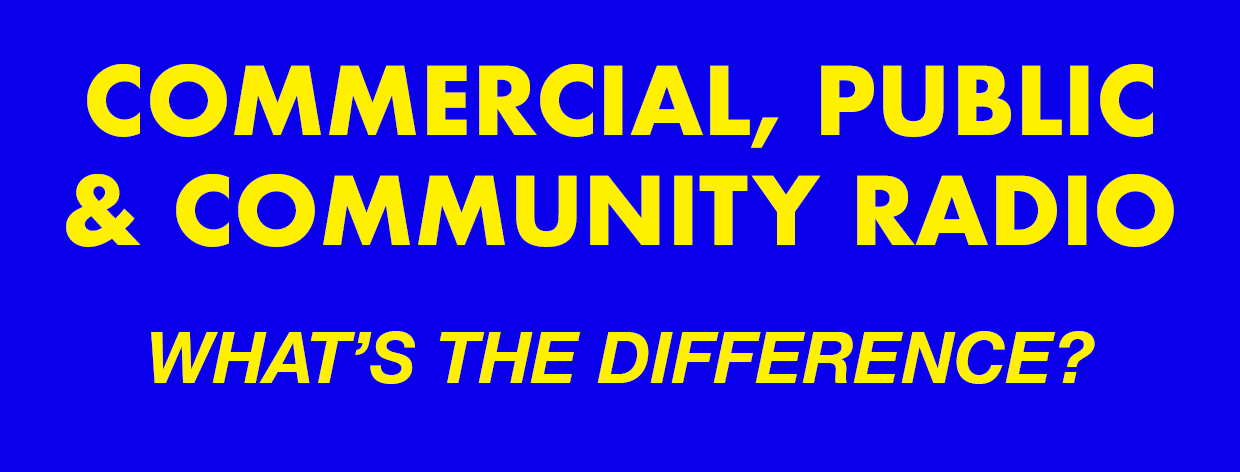QUEENS COUNTY COMMUNITY RADIO
VOLUNTEERS
SCHEDULE
ABOUT US
ON-LINE TRAINING RESOURCES
COMMUNITY RADIO LINKS
1-902-356-QCCR (7227)
176 MAIN STREET, LIVERPOOL
COMMUNITY OWNED AND OPERATED SINCE 2008
DONATE
Commercial broadcasting (also called private broadcasting) is the broadcasting of television programs and radio programming by privately owned corporate media, as opposed to state sponsorship. It was the United States′ first model of radio (and later television) during the 1920s, in contrast with the public television model in Europe during the 1930s, 1940s and 1950s which prevailed worldwide (except in the United States) until the 1980s.
Public broadcasting includes radio, television and other electronic media outlets whose primary mission is public service. In much of the world, funding comes from the government, especially via annual fees charged on receivers. In the United States, public broadcasters may receive some funding from both federal and state sources, but generally most financial support comes from underwriting by foundations and businesses ranging from small shops to corporations, along with audience contributions via pledge drives. The great majority are operated as private not-for-profit corporations.
Community radio is a radio service offering a third model of radio broadcasting in addition to commercial and public broadcasting. Community stations serve geographic communities and communities of interest. They broadcast content that is popular and relevant to a local, specific audience but is often overlooked by commercial or mass-media broadcasters. Community radio stations are operated, owned, and influenced by the communities they serve. They are generally nonprofit and provide a mechanism for enabling individuals, groups, and communities to tell their own stories, to share experiences and, in a media-rich world, to become creators and contributors of media.

Founded in 1986, the National Campus & Community Radio Association (NCRA) helps campus and community radio stations get and stay on-air.
We help amplify under-represented voices. We foster and celebrate compelling local grassroots radio. And we bring stations together to share their
skills, passions, and ideas.
ADOBE AUDITION
Adobe Audition is a digital audio workstation from Adobe Systems featuring both a multitrack, non-destructive mix/edit environment and a destructive-approach waveform editing view.
STATION PLAYLIST EDITOR
Creator is our music and spot scheduling software. It is used to design your station format using rotations of music categories and spot groups (jingles, ads, etc).
Transom
Transom channels new work, voices, and ideas into public media through the Internet and workshops. Our goal is to be useful and inspiring. Transom is a performance space, an open editorial session, an audition stage, a library, and a hangout. Our purpose is to pass the baton of mission and good practice in public media through tools, philosophy, and technique.
ZOOM H4N Pro Handy Recorder
The H4n Pro provides the essential combination of mic’ing versatility, portability, and superior audio necessary for impactful storytelling. This field recorder is a helpful tool for recording audio on location and also as a compact audio interface. You can also record time-stamped WAV files to sync with video footage in post-production, or embed superior audio directly on your video in real-time through a ⅛" stereo feed.
AUDACITY
Audacity is a free and open-source digital audio editor and recording application software, available for Windows, macOS/OS X and Unix-like operating systems.
working in the studio (coming soon!)